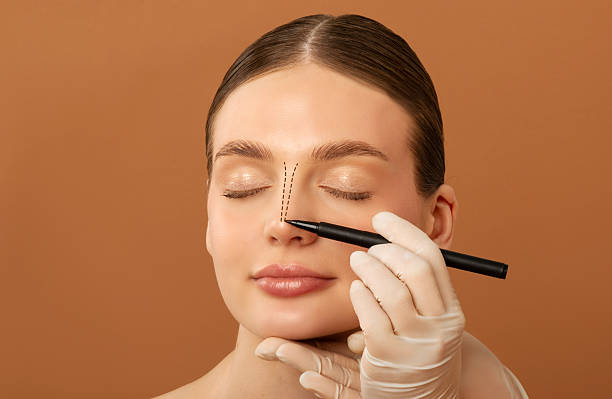Undergoing Rhinoplasty in Abu Dhabi is an exciting step toward achieving your desired facial harmony. The first consultation is a crucial phase where both the patient and the surgeon lay the foundation for a successful procedure. This initial meeting provides an opportunity to understand what the surgery entails, discuss expectations, and ensure that the patient feels comfortable and well-informed. For those considering rhinoplasty, knowing what to expect during this first consultation can help alleviate concerns and foster confidence in the process.
Understanding the Purpose of the First Consultation
The primary goal of the initial consultation is to establish a clear understanding of the patient’s goals and determine how rhinoplasty can help achieve them. It’s also a chance for the surgeon to assess the patient’s nasal structure, overall health, and suitability for surgery. This step ensures that both parties are aligned and that realistic expectations are set.
Preparing for the Consultation
Before attending the appointment, it’s helpful for patients to gather relevant information and think about their motivations for rhinoplasty. This preparation includes:
- Reflecting on specific concerns about the nose’s appearance or function.
- Collecting questions to ask the surgeon.
- Reviewing any previous nasal injuries or surgeries.
- Being honest about medical history, allergies, or ongoing health issues.
Being prepared allows for a more productive consultation and ensures that all concerns are addressed.
What the Surgeon Will Examine
During the consultation, the surgeon will conduct a comprehensive assessment of the nasal structure. This examination involves:
- Visual inspection of the nose from different angles.
- Palpation to assess the skin’s thickness and the underlying nasal framework.
- Analyzing nasal symmetry, proportions, and relationships with other facial features.
- Evaluating skin quality and thickness, which can influence surgical options and outcomes.
- Checking for any structural issues, such as a deviated septum, that might affect both appearance and breathing function.
This thorough evaluation helps the surgeon understand the individual’s unique anatomy and tailor the surgical plan accordingly.
Discussing Patient Goals and Expectations
A key part of the first consultation is understanding what the patient hopes to achieve. Patients are encouraged to communicate their aesthetic goals clearly. Common concerns discussed include:
- The size and shape of the nose.
- The prominence of the nasal hump.
- The width or narrowness of the nostrils.
- The symmetry of the nose and nostrils.
- The shape of the nasal tip.
- Any functional issues like breathing difficulties.
Open dialogue ensures the surgeon can recommend realistic modifications that align with the patient’s desires while maintaining facial harmony.
Explaining Surgical Options and Techniques
Based on the examination and patient goals, the surgeon will explain the various rhinoplasty techniques suitable for the case. These may include:
- Open rhinoplasty, which involves a small incision across the columella for greater visibility and precision.
- Closed rhinoplasty, where incisions are made within the nostrils for less visible scarring.
- Structural grafting or cartilage reshaping to achieve desired outcomes.
- Septoplasty, if nasal breathing issues are present.
The surgeon will discuss how each option can help attain the desired appearance and function, along with any limitations or considerations.
Visual Aids and Simulations
Many surgeons use digital imaging or computer simulations to help patients visualize potential results. These visual aids provide a realistic preview of how the nose might look post-surgery, aiding in setting appropriate expectations. While these images are not guarantees, they serve as valuable tools for understanding possible outcomes.
Assessing Candidacy for Rhinoplasty
During the consultation, the surgeon will determine if the patient is a suitable candidate for rhinoplasty. Ideal candidates typically:
- Are in good overall health.
- Have fully developed facial features, usually after adolescence.
- Have specific concerns about their nasal appearance or function.
- Have realistic expectations about the results.
If there are underlying health issues or unrealistic expectations, the surgeon will discuss these to ensure safety and satisfaction.
Discussing the Surgical Process and Timeline
Patients will receive an overview of what the surgical process involves, including:
- The planning and marking of the surgical areas.
- The type of anesthesia used.
- The duration of the procedure.
- The typical recovery timeline.
- Postoperative care instructions.
This information helps patients prepare mentally and logistically for the upcoming surgery.
Addressing Patient Questions and Concerns
The consultation is an open forum where patients are encouraged to ask questions. Common questions may include inquiries about scarring, recovery, or how the nose will look afterward. Surgeons aim to provide honest, clear answers to foster trust and confidence.
Setting Realistic Expectations
A vital part of the first consultation is managing expectations. While rhinoplasty can significantly enhance facial harmony, it’s essential for patients to understand the limitations and that results may vary based on individual anatomy and healing processes. The surgeon will emphasize the importance of patience during recovery and the gradual nature of visible results.
Aftercare and Follow-Up Planning
Although detailed aftercare instructions are usually provided after the surgery, initial discussions about postoperative care may occur during the consultation. Patients might be advised about:
- Rest and activity restrictions.
- Managing swelling and bruising.
- Follow-up appointments to monitor healing.
Establishing a follow-up plan ensures ongoing support and optimal results.
Frequently Asked Questions About the First Consultation
What should I bring to my first consultation?
Patients are encouraged to bring any relevant medical records, photos of the nose from different angles, and a list of questions or concerns to discuss with the surgeon.
How long does the first consultation typically last?
The duration can vary, but generally, it lasts between 30 minutes to an hour, allowing ample time for discussion and examination.
Will I be able to see potential results during the consultation?
While digital simulations can provide an idea of the possible outcome, they are not exact predictions. The surgeon will explain what results are realistic based on individual anatomy.
Is the consultation confidential?
Yes, consultations are private, and all discussions are held with confidentiality and professionalism.
When should I decide about proceeding with surgery?
Patients are encouraged to take their time after the consultation to consider all information and reflect on their decision. Surgeons often recommend scheduling a follow-up to address any additional questions.
Final Thoughts
The first consultation for Rhinoplasty in Abu Dhabi is designed to be informative, reassuring, and collaborative. It sets the stage for a successful surgical journey by ensuring that the patient feels comfortable, well-informed, and confident in their decisions. With thorough assessment, honest communication, and realistic planning, patients can look forward to a transformative experience that enhances both their appearance and self-esteem.
READ MORE : Is Rhinoplasty Safe for All Nose Types and Shapes?




